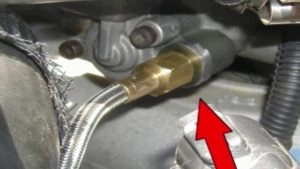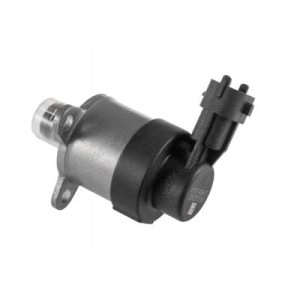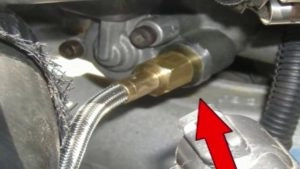The fuel pressure regulator is a vital part of the car's fuel system, which helps adjust the fuel pressure sent to the engine.
Over time, this part may get damaged, which can affect the car's performance and cause many problems. Therefore, we will be discussing in detail the fuel pressure regulator and review the symptoms of its damage.

What is a fuel pressure regulator?
A fuel pressure regulator or gauge is a small device installed in a car's fuel system. This device is used to measure the pressure inside the fuel system, helping to maintain the ideal pressure in the fuel system.
The fuel pressure regulator consists of a valve that opens and closes the pressure when it reaches the specified limit, and also contains a filter to purify the fuel before it reaches the engine.
What is the importance of a fuel pressure regulator?
The regulator is a fundamental part of the car's fuel system, significantly impacting the engine's performance and fuel consumption. Excessive or insufficient fuel pressure affects the engine's efficiency, increases fuel consumption and exhaust emissions, and can lead to damage to other parts of the system.
Thanks to its role in controlling fuel pressure, the regulator can ensure the correct and ideal pressure and fuel consumption for the engine. It helps improve engine efficiency and prevents damages to its parts.
Symptoms of Fuel Pressure Regulator Damage
When exposedThe RegulatorIf damaged, it can cause many problems in the car. The following are some common symptoms that indicate a malfunction in the fuel pressure regulator:
Increased fuel consumption
If the regulator is faulty, it can lead to increased consumption of a larger amount of fuel. This happens because the engine continues to receive a large amount of fuel irregularly, which may cause the engine to burn more fuel than necessary.
Difficulty in starting the engine.
If the fuel pressure regulator of your car is not functioning properly, it could lead to a failure in starting the engine, as the engine requires a specific amount of fuel to start. If this amount is not provided adequately, the engine may not be able to start correctly.
3. Weak engine performance
If the fuel pressure regulator is faulty, it can result in a reduction of overall engine performance, as this can lead to insufficient power supply to the engine, which in turn prevents the car from operating properly.
4. Delay in response
If the regulator responsible for controlling the fuel pressure is damaged, it can lead to a delay in the engine response.
The engine requires a specific amount of fuel to respond correctly, and if the engine does not get this amount properly, it can lag in its response.
5. Increase in exhaust emissions
If the regulator fails, it can lead to an increase in exhaust emissions because the engine needs a specific amount of fuel to burn properly. If this amount is not provided adequately, it can lead to an increase in exhaust emissions.
If you are experiencing any of these symptoms, it is important to service your car as soon as possible, because a faulty fuel pressure regulator can cause further damage to your car's engine.
Also read:Top 8 Reasons Leading to Increased Fuel Consumption in the Car

Reasons for Fuel Pressure Regulator Damage
If you want to keep your car's fuel regulator in good condition and avoid high repair costs, you should understand the reasons for its damage. Here are some possible reasons for regulator damage:
Wear and Tear Over Time: The regulator, like any other mechanical component, can become damaged over time due to excessive use.
Using low-quality fuel: The regulator can get damaged or malfunction due to the residues and impurities present in the fuel.
Incorrect Installation: If the regulator is not properly installed, it may cause damage.
CorrosionCorrosion caused by exposure to moisture or other environmental factors can lead to damage to the fuel pressure regulator.
Electrical Problems: Failures or issues related to the electrical components connected to the regulator can also cause damage to it.
How to maintain the fuel pressure regulator?
It's essential to regularly maintain the regulator responsible for managing the fuel pressure to ensure its proper function and maintain the health of the system. The routine maintenance that should be carried out on the regulator includes the following:
1- Check for leaks
The regulator should be checked regularly to ensure that there are no leaks in the system. Leaks can be detected by examining the pipes, hoses, clamps, and connectors present in the fuel system.
2- Cleaning the regulator
The regulator should be regularly cleaned of dirt and deposits that can affect its performance. Special solvents can be used to clean the regulator and maintain it.

3- Replace the regulator
In case the regulator is not functioning correctly or is damaged, it must be replaced with a new piece. Care should be taken to purchase a suitable piece for the type and model of the engine and fuel system.

Comments